I know I sometimes bang on about fish sauce. No apologies from here though — sorry — ‘cos if you know, you know…
A rather spiffing new book came out just after Christmas 2021, one co-written with chef Diep Tran of Good Girl Dinette in LA, author Tien Nguyen (who worked with Roy Choi on “LA Son”)…
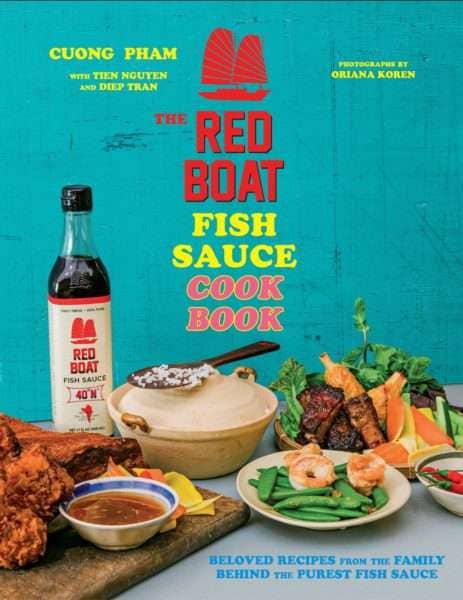
…and one of the doyens of Vietnamese fish sauce production, Red Boat Sauce CEO Cuong Pham

…who after leaving his job as an early Jobs-era Apple employee has, for the past 20 years, been producing old-style pure fish sauce using only local black anchovies (cá cơm than) and then just adding, as he describes it:
the most expensive ingredient, time
taking these fish from the seas using the Red Boat, er, boat…

…from around Phú Quốc island

…adding Ba Ria salt — in a 3:1 anchovy to salt ratio — straight after the catch is brought on board and whilst they’re still in transit on the boats…
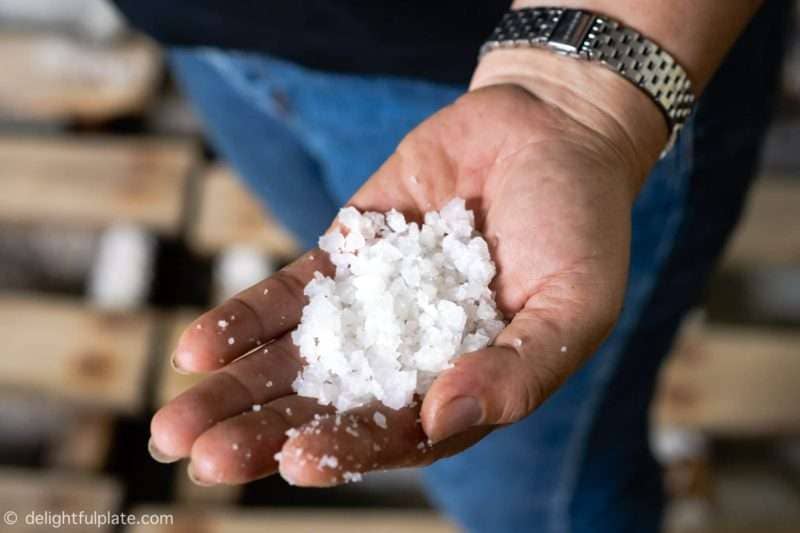
…then, when they get back to port, putting up to 14 tons of these anchovies into each barrel — made from wood from bời lời trees which can last upwards of 50+ years — some holding as much as 5,000l. of the slowly fermenting sauce (“chượp“) in the “barrel house”, called nhà thùng and leaving it in these hot, humid halls to mature for at least a year.
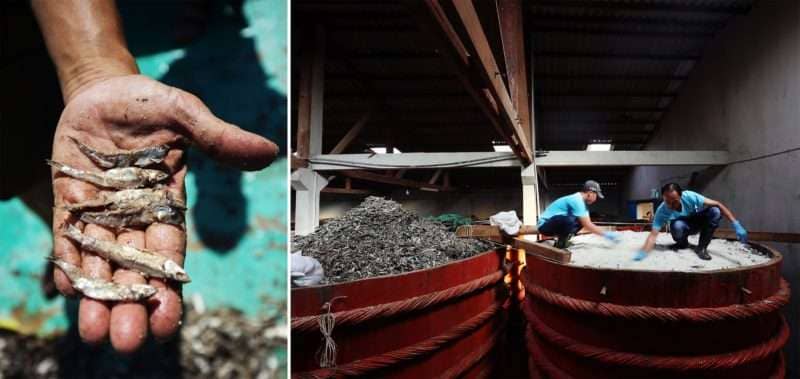
After that, they’ll only use the first pressing “nước mắm cốt” or “nước mắm nhĩ” which gives the highest protein levels i.e. maximum umami and taste.
This particular variant of theirs then goes on to be aged in old bourbon & maple syrup barrels followed by being smoked over a combination of mesquite, hickory and cherry wood…
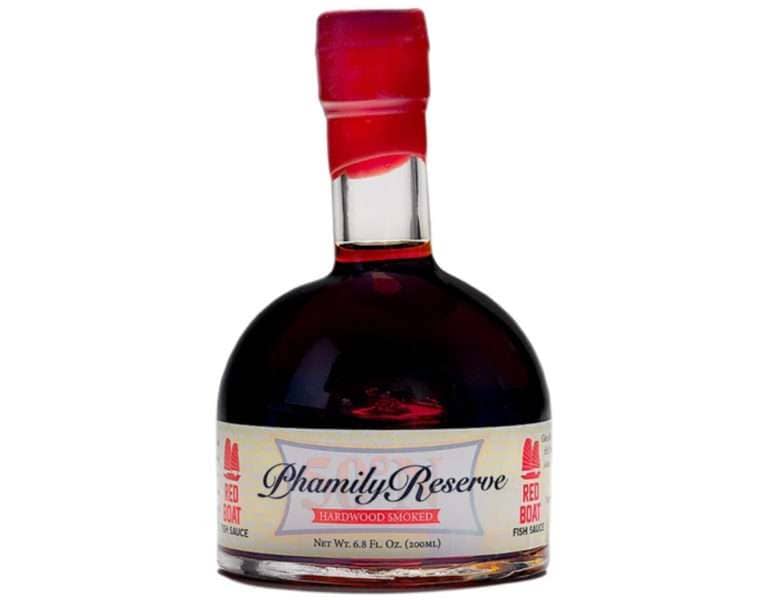
And pretty much nothing from the process goes to waste: after the salt is filtered out, it’s dried and sold as their own (“versatile umami bomb”) brand…
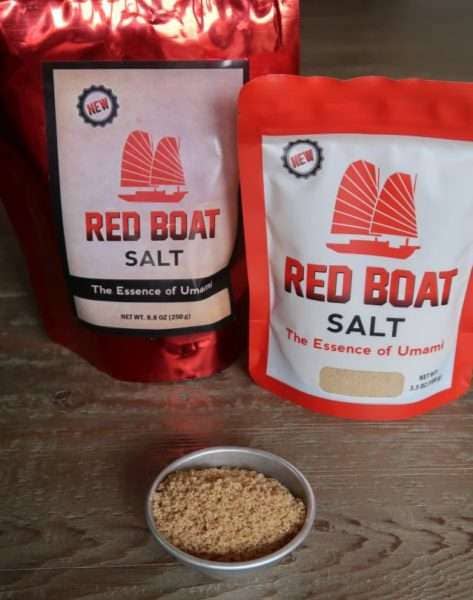
…and the remaining fish scraps after this pressing are then sold off for animal feed.
Going further down the salt research rabbit-hole, I found a group of excellent videos on some of the most labour intensive (thus, rightly, expensive) and most important types:
Senegalese salt 🧂
Asian Tibuok from the Philippines
and Korea’s Bamboo Salt
After watching the sheer hard, physical, graft involved, I was exhausted on their behalf; I promise never to complain about my easy life again.
For a possibly more local supply (if you’re in the UK that is) of what looks to be an excellent salt, I’d suggest this one by Blackthorn Sea Salt from the Atlantic coast of Ayr, Scotland...

…where they refine the salt through a bunch of blackthorn placed in this rather spectacular tower.

One more for the “visit here post-‘Rona” list, as we’d be fascinated to see their process in action…

I also came across a great resource on garum, the predecessor to our current versions of fish-sauce (well, technically, liquamen is the old name for fish sauce used daily, by everyone, whilst garum was used for a special “blood sauce” by the elite of Roman society, but read the paper…), “The Story of Garum: Fermented Fish Sauce and Salted Fish in the Ancient World” by Dr. Sally Grainger. This is just the free summary; you’ll need a fully paid-up Academia account or be ready to spring for some some serious cash for the hard-copy version…
…and there’s a fascinating 45 minutes long YouTube lecture by this same academic, in which she makes a very valid and (still today) important comment about the standing (or actually the lack thereof) of the people involved
…the people who make it do not speak at all, it’s only the people who consume it who talk to us about their interest in it and what they like about it.
Go on, spend a little while delighting in osmosing some or all of this serious academic detail, but at the end of your hard work you should find your mouth watering in anticipation of the tastes…
Finally, to end this one, is the Red Boat Sauce team’s take on a Bloody Mary:
From the sweetness of the tomatoes to that kick of spice from the horseradish and hot sauce, the best Bloody Marys have layers and layers of flavor. Our version of this classic brunch cocktail includes a bit of fish sauce, which intensifies the umami in the other ingredients, especially the tomatoes. Indeed, this Bloody Mary relies on good tomatoes to stand up to the fish sauce and the other spices and seasonings in the drink. For that reason, we like to use super ripe, deeply flavorful heirloom tomatoes when they’re in season. You can find them at specialty grocers or your local farmers market—look for the ones that seem just about ready to burst. If heirlooms aren’t in season, canned or very ripe tomatoes will do, too.
250g. heirloom tomatoes
½ rib celery
¼ cucumber, peeled
5g. grated horseradish
10g. Red Boat Fish Sauce
10g. teaspoons lemon juice
10g. Sriracha
5g. stone ground mustard
5g. minced parsley
4 shiso leaves
120ml. vodka
Serving:
- In a blender, combine all the ingredients except the vodka and blend until smooth.
- Add ice to two glasses. Pour 60ml. of vodka and half of the the blender mix into each glass.
- Stir and drink.
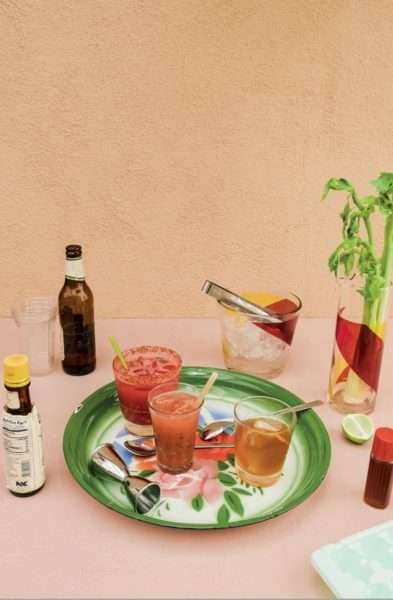
References & acknowledgements: